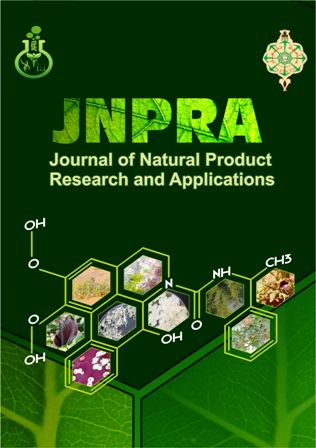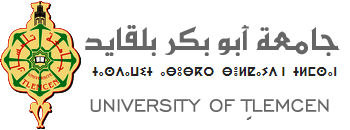Insecticidal activity of diatomaceous earth on larvae and adults of Ceratitis capitata Wied., (Diptera; Tephritidae), citrus pests against ecological control
DOI:
https://doi.org/10.46325/jnpra.v4i01.71Keywords:
Diatomaceous earth, Ceratitis capitata, mortality, toxicity, control.Abstract
To assess the toxicity effect of diatomaceous earth on larvae and adults of Ceratitis capitata, we subjected them to different doses to control their mortalities. Adults of Ceratitis capitata were exposed to diatomaceous earth at different concentrations: 0mg/cm2; 2,6mg ; 2,8mg ; 3mg ; 3,2mg ; 3,4mg ; 3,6mg ; 3,8mg and 4 mg/cm2. We monitored their mortality rate every 12 hours up to 96 hours of exposure.
The larvae were also exposed to different concentrations of the diatomaceous earth mixed with sawdust: 0, 100, 120, 140, 160, 180, 200, 220 and 240 mg/cm3. We monitored their mortality rate every 12 hours up to 96 hours of exposure before pupation.
The insecticidal activity of diatomaceous earth on Ceratitis capitata has offered us highly significant results on the different stages (larvae and adults). Indeed, we obtained CL50 of 158.29 mg/cm3 for larvae and 3.262mg/cm2 for adults. The mortality average of Ceratitis larvae increased with the doses of diatomite used, reaching its maximum at the dose of 240mg/cm3. The mortality average of Ceratitis adults after exposure to diatomaceous earth showed an ascending curve which started from the dose of 2.60mg/cm2 with a mortality average of 43.3% through repetition, reaching its maximum of 10 dead individuals through the repetition of the dose of 4mg/cm2. These results allow us to propose this natural product as an alternative to insecticides hitherto used to fight Ceratitis capitata, which will better protect our health and environment.
References
Alexander, P., Kitchener, J.A., Briscoe, H.V.A. (1944b). Inert dust insecticides. Part II. The nature of effective dusts. Annals Applied Biology, 31: 150-156. doi: http://dx.doi.org/10.1111/j.1744-7348.1944. tb06226.x.
Alexander, P., Kitchner, J.A., Briscoe, H.V.A. (1944a). Inert dust insecticides. Part I. Mechanism of action. Annals Applied Biology, 31:143-9. doi: http://dx.doi.org/10.1111/j.1744-7348.1944. tb06225.x.
Alexander, P., Kitchner, J.A., Briscoe, H.V.A. (1944c). Part III. The effect of dust on stored products pests other than Calandra granaria. Annals Applied Biology, 31: 156- 159. doi: http://dx.doi.org/10.1111/j.1744-7348.1944. tb06227.x.
Beament, J.W.L. (1945). The cuticular lipids of insects. Journal of Experimental Biology. 21, 115-131.
Bounouira, Y., Gaouar-Benyelles, N., Senouci, H., M'saad-Guerfali, M. (2019). Insecticidal efficacy of diatomaceous earth on larvae of Agriotes lineatus (Coleoptera; Elateridae), potato pests in Tissemsilt, Algeria. Fresen Environ Bull. 28(12A): 9956-9962.
Calvert, R. (1930). Diatomaceous Earth. American Chemical Society Monograph. Reprint 1976, University Microfilms. Annals Arbor, MI. pp. 251. doi: http://dx.doi.org/10.1016/S0016-0032(30)90067-1.
Chiu, S.F. (1939a). Toxicity of so-called “inert” materials with the bean weevil Acanthoscelides obtectus. Journal of Economic Entomology, 32(2): 240-248. doi: http://dx.doi.org/10.1093/jee/32.2.240.
Chiu, S.F. (1939b). Toxicity of so-called “inert” materials with the rice weevil and the granary weevil. Journal of Economic Entomology, 32(6): 810-821. doi: http://dx.doi.org/10.1093/jee/32.6.810.
Dagnélie, P. (Ed) (1975). Theory and statistical methods (in French). Vol.2. 2nd Edition. Les Presses agronomiques de Gembloux, Gembloux, Belgium.
De Crosta, A. (1979). Mother Nature’s bug killer. Organic Gardening, 26(6): 38-44.
Duyck, P.F (2005). Interspecific competition and invasive abilities. The case of the Tephritidae of Reunion Island (in French). Thèse. Doc. Univ. La Réunion.
Ebeling, W. (1971). Sorptive dusts for pest control. Annual Review of Entomology, 16: 123-158. https://doi.org/10.1146/annurev.en.16.010171.001011.
Ebeling, W., Wagner, R.E. (1959). Rapid desiccation of drywood termites with inert sorptive dusts and other substances. Journal of Economic Entomology, 152: 190-212. https://doi.org/10.1093/jee/52.2.190.
Ebeling, W. (1964) Permeability of insect cuticle. In: Rockstein, M. (Ed.) The Physiology of Insecta, Vol. III. Academic Press, New York, 508-523.
Fields, P., Korunic, Z. (2000). The effect of grain moisture content and temperature on the efficacy of diatomaceous earths from different geographical locations against stored-product beetles. Journal of Stored Products Research, 36: 1-13. https://doi.org/10.1016/S0022-474X(99)00021-1.
Flanders, S.F. (1941). Dust as an inhibiting factor in the reproduction of insects. Journal of Economic Entomology, 34(3): 470-472.
Germar, B. (1936). Versuche zur Bekämpfung des Kornkäfer mit Staubmitteln. Zeitsch. F. ang. Ent. XXII, 603-630. doi: http://dx.doi.org/10.1111/j.1439-0418.1938. tb00457.x.
Islam, M.S., Hasan, M.M., Lei, C.L., Pelzer, T., Mewis, L.I., Ulrichs, C. (2010). Direct and admixture toxicity of diatomaceous earth and monoterpenoids against the storage pests Callosobruchus maculatus (F.) and Sitophilus oryzae (L). Journal of Pest Science, 83(2): 105-112. https://doi.org/10.1007/s10340-009-0276-7.
Kabir, B.G.J. (2013). Laboratory evaluation of efficacy of three diatomaceous earth formulations against Tribolium castaneum Herbst (Coleoptera: Tenebrionidae) in stored wheat. European Scientific Journal, 9 (30): 116-124.
Kabir, S.M.H., Das, D.R., Faruki, S.I., Reza, A.S.R., Parween, S., (2011).Control of population build-up of Tribolium castaneum (Herbst) and Sitophilus oryzae L. by diatomaceous earth. Journal of the Asiatic Society of Bangladesh, 37(1): 15-23.
Kavallieratos, N.G., Athanassiou, C.G., Mrakou, F., (2007). Factors affecting laboratory bioassays with diatomaceous earth on stored wheat: effect on insect density, grain quantity, and cracked kernel containment. journal of the Entomological, 100 (5): 1724e1731.
Korunic, Z. (1997a). Rapid assessment of the insecticidal value of diatomaceous earths without conducting bioassays. Journal of Stored Products Research, 34: 1-11. https://doi.org/10.1016/S0022-474X(97)00004-0.
Korunic, Z. (1997b). Diatomaceous earths, a group of natural insecticides. Journal of Stored Products Research. 34: 87-97.
Korunic, Z., Rozman, V., Liska, A., Lucic, P. (2016). A review of natural insecticides based on diatomaceous earths. Poljoprivreda, 22(1): 10-18. http://dx.doi.org/10.18047/poljo.22.1.2.
Korunic, Z. (1998). Review Diatomaceous Earth e a group of natural insecticides. J. Stored Prod. Res. 34, 87e97. https://doi.org/10.1016/S0022-474X(97)00039-8.
Melichar, B., Willomitzer, J. (1967). Bewertung der physikalischen Insektizide. In: Proceeding 25th Congress of Pharmaceutical Science 1965, 2. Scientia Pharmaceutica, Prague, pp. 589-597.
Mewis, I., Ulrichs, C. (2001). Action of amorphous diatomaceous earth against different stages of the stored product pests Tribolium confusum, Tenebrio molitor, Sitophilus granarius and Plodia interpunctella. Journal of Stored Products Research, 37(2): 153-164. https://doi.org/10.1016/S0022-474X(00)00016-3.
Quarles, W. (1992). Diatomaceous earth for pest control. IPM Pract. 14 (1), 1e11. Regulation (EC) No 1107/2009. https://eur-lex.europa.eu/legal-content/EN/TXT/ PDF/?uri¼CELEX:32009R1107&from¼EN.
Rambo, G. (1992). Efficacy of diatomaceous earth from Harper Diatomite Deposit for control of German Cockroaches in living spaces. Appendix A to Volume 4, M Melosira DE-100 data submitted to US EPA.
Reza, A.M.S., Hossain, M.M., Parween, S. (2012). Repellent action of diatomaceous earth against the adult red flour beetle Tribolium castaneum (Herbst). Journal of Scientific Research, 4(3): 783-788. https://doi.org/10.3329/jsr.v4i3.9637.
Reza, A.M.S., Hossain, M.M., Parween, S., (2012). Repellent action of diatomaceous earth against the adult red flour beetle Tribolium castaneum (Herbst). Journal of Scientific Research, 4(3): 783-788.
Rigaux, M., Haubruge, E., Fields, P.G. (2001). Mechanisms for tolerance to diatomaceous earth between strains of Tribolium castaneum. Entomologia Experimentalis et Applicata, 101: 33-39. https://doi.org/10.1046/j.1570-7458.2001.00888.x.
Ross, T.E. (1981). Diatomaceous earth as a possible alternative to chemical insecticides. Agriculture and Environment, 6: 43-51. https://doi.org/10.1016/0304-1131(81)90026-6.
Smith, B.C. (1969). Effects of silica on the survival of Coleomegilla maculata lengi (Coleoptera: Coccinellidae) and Leptinotarsa decemlineata (Coleoptera: Chrysomelidae). Can Entomol. 101: 460-462.
Snetsinger, R. (1982). Tests with Dead-End Roach Killer in Rental Apartments. Report of Department of Entomology, Pennsylvania State University.
Snetsinger, R. (1988). Report on Shellshock Insecticide. Report of Department of Entomology, Pennsylvania State University.
Sokal, R.R., Rohlf, F.J. (1995). Biometry: The Principles and Practice of Statistics in Biological Research. W.H. Freeman, New York.
Stathers, T.E., Mvumi, B.M., Golob, P. (2002). Field assessment of the efficacy and persistence of diatomaceous earths in protecting stored grain on small-scale farms in Zimbabwe. Crop Protection, 21: 1033-1048. https://doi.org/10.1016/S0261-2194(02)00088-1.
Subramanyam, B.h., Roesli, R., (2000). Inert dusts. In: Subramanyam, Bh, Hagstrum, D.W. (Eds.), Alternatives to Pesticides in Stored-Product IPM. Kluwer Academic Publishers, Dordreecht, pp. 321e380. https://doi.org/10.1007/978-1- 4615-4353-4_12.
Thomas, M.C., Happner, J.B., Woodruff, R.E., Weems, H.V., Steck, G.J., Fasulo, T.R. (2001). Mediterranean fruit fly, Ceratitis capitata (Widemann) (Insecta : Diptera : Tephritiae). Florida Department of agriculture and Consumer Services, Division of Plant Industry ; and T.R. Fasulo, Entomology and Nematology Department, university of Florida, Gainesville, FL.
Webb, J.E. (1946). The penetration of Derris through the spiracles and cuticle of Melophagus ovinus, L. Bulletin of Entomological Research, 36, 15-22.
Weinzierl, R., Jones, C. (2000). Insect pest management for livestock and livestock buildings. Illinois Agricultural Pest Management Handbook. 129-167.
Wilbur, D.A., Swoyer, G., Donahy, A. (1971). Effects of standardized diatomaceous earth on certain species on insects. Project report No.5203 of Kansas Agricultural Research Station, U.S.A.
Zacher, F. (1937a). Eine neue gruppe von insektiziden. C.R. du XII Cong. Int. De Zool. Lisbonne, 1935: 2336- 2340.
Zacher, F. (1937b). Neue untersuchungen uber die einwirkung oberflachenaktiver pulver auf inseckten. Zool. Anzeiger, 10: 264-271.
Zacher, F., Kunike, G. (1931). Contributions to the knowledge of stock pests. Investigations on the insecticidal effect of oxides and carbonates (in German). Arb Biol Reichsan. 18, 201-231
Downloads
Published
How to Cite
Issue
Section
License

This work is licensed under a Creative Commons Attribution-NonCommercial 4.0 International License.






